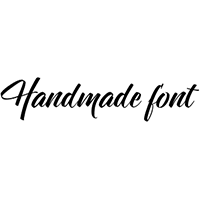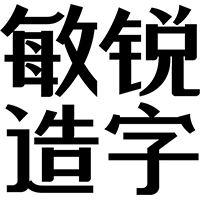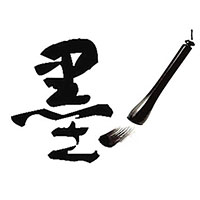FontFont Focus: FF Good, FF More, FF Best!

One of the things the FontFont library is known for are its extensive type families that cross type classifications. The jury is still out whether we should call them super families or type systems, but one thing is sure – these co-ordinated type families of serif and sans serif companions (and sometimes even more) are ideally suited for graphic identities, complex publications, editorial design and so on. While some like FF Nexus were specifically conceived as such, others start as humble typefaces with a couple of styles and gradually expand into sprawling typographic systems. The best-known example of this is of course FF Meta. Recently one of Łukasz Dziedzic's typefaces made similar transition. He first expanded his sans serif family FF Good from 9 to a whopping 60 styles; then he built the 30 styles of the serif FF More to work alongside it. An interview.

Łukasz Dziedzic (right, with Adam Twardoch on the left). Photo by Dominika Naborowska
Łukasz Dziedzic was born 1967 in Warsaw. Rather than to finish high school, he worked as a sound technician, actor, carpenter helper rebuilding 13th-century churches, singer/bass guitarist and software developer at the Polish patent office. During the first free Polish elections of 1989, he briefly worked as a newsboy for Gazeta Wyborcza, the newly-launched, first independent daily newspaper in the country. A year later, he joined the design department of Gazeta Wyborcza and spent seven years there, co-creating the layouts of the main newspaper and its weekly companion magazine, for which he drew his first typeface. He later worked for several other publishing houses in Warsaw, designing newspapers and magazines. At the same time, Lukasz drew over a dozen typeface families ranging from large Latin and Cyrillic text families to single display styles.

Letter from Łukasz to his boss Jürgen Thies at Komputer Świat, showing the range of weights and widths in Weekend. The weight progression is based on Luc(as) de Groot's theory.
What was your earliest experience with type or typography?
Łukasz Dziedzic | "I think the first proof of my typographic perversion was a satirical school magazine that I made by hand at age 10. I drew all text in pencil, trying to imitate Times, typewriter letters and something in the same spirit as Neo Sans or FF DIN Rounded."
When did you design your first typeface, and how did that become to be?
Łukasz Dziedzic | "My first working typeface that went to print was Champaigne. I designed it in 2003 for a series of supplements to Gazeta Wyborcza, the daily newspaper that I was working for at that time. It was a year before Poland joined the EU, so each issue of the supplement presented a different European country. I started by designing a series of country flags of all EU members, and then based the letter shapes of the fonts on the same style. The font is still used at Wyborcza in the women's supplement Wysokie Obcasy. It turns out that people liked it: someone scanned and traced an early version of this font and published it on the web as a free font. So I see it pop up in various places from time to time. Recently I even saw a home-made bold variant in a shop window!"

The full range of 7 weights in 7 widths for Weekend, the proto-version of what was to become FF Good.
How did your fascination for letters turn into a profession in type design?
Łukasz Dziedzic | "I spent some ten years working in newspaper design. When I started, I had no budget for fonts, and even if I had, there was no time to research the font market (the Internet was not so great as today is).
When starting to work on a new layout, I often did what older art directors did: I drew some headlines by hand and scanned them, or drew them in Illustrator. I experimented with the right mood, wanted to see different styles and emotion, tried to find the right grey value of the page. When the design was accepted, it often turned out that no foundry offers fonts that would fit those sketches, so the only way for me to implement the design was to draw a new set of fonts.
After a few years, I discovered that designing type is much more fun than designing newspapers. I made my first custom font for the empik bookstore chain and FontFont started to sell FF Clan, a family that I originally designed for a newspaper project and later expanded. It seemed that people liked my fonts so I decided to leave the newsrooms forever."

First printing of FF Good, then called Weekend, counting 49 styles with no italics.
Do you consider type design more an art or a craft?
Łukasz Dziedzic | "Both. Art, because you need real passion to have the power to do craft. Craft, because passion is not enough to make good type (whatever "good" means in this case)."
Where does your inspiration for new typefaces come from?
Łukasz Dziedzic | "From my surroundings. From shapes-of-everything. I made Champaigne based on the style of the graphic elements that I drew first. From the emotions of the message. It's how I designed FF Mach and FF Pitu. Mach is readable in small sizes as well as Times, you can set body text with it, but it strikes you with gross simplicity in large sizes. On the other hand, you can't read FF Pitu, since it'll slice your eye first. Out of necessity. FF Good, FF More, FF Clan – I just couldn't buy them."
How do you approach the design of a typeface?
Łukasz Dziedzic | " 'In the beginning was the Word'. That's a good principle. I draw one word at first. If six days is not enough to define the general shape, then it means either the idea is bad or I am not good enough."

Two abandoned italic sketches for FF More.
Does the end result usually stay close to your original concept, or do your type designs tend to evolve much during the production process?
Łukasz Dziedzic | "Each time, I know that I'm getting very far from my original concept, but I never know if it's good thing or a bad thing. I never compare the final product with the initial sketches.
When I finish a project, I'm always disappointed. By that time, I've often lost touch with my point of origin. But then some time passes, sometimes a few years, and I discover that someone used one of my typefaces well. And then I realize that that person actually understood my initial idea and used the font in a way that I actually designed it for. I love those moments!"
Do you do a lot of custom type design as commissioned work?
Łukasz Dziedzic | "Not much: I made custom families for Poland's largest bookstore chain empik and for Getin Bank. Lato started off as custom font for another bank, but they changed the "design direction". Now it's free."

Multi-layer 'g', showing how the characters in FF More are drawn for optimal interpolation of weights and widths.

Multi-layer design of basic weight and width in FF More.

While working on FF More Łukasz made a script to inject every generated instance straight into this lay-out. This provided an immediate review of how all the different weights and styles of the typeface behaved on a "real" page (although the page was completely fake).
FF Good & FF More
For its OpenType release in 2010FF Goodwas boosted from a mere 9 styles to 60 styles. The versatile straight-sided sans serif has been radically overhauled. The original incarnation of this contemporary alternative for News/Trade Gothic was a rather small family of three weights in three widths, with no italics. The new version however comes in five weights ranging from Light to Black, in Condensed, Regular, and Wide widths, all with matching italics, and small caps for both roman and italic styles.
Even better, the expanded suite of 30 styles is now also available in a Headline version, with shorter ascenders and descenders to allow for more compact setting. All the fonts have been augmented with Latin Extended and Cyrillic Extended character sets. Little bits of trivia – proportional lining figures have become default, and the typeface has three ampersands, ideal for fine-tuning headlines.

It's easy to find sans serif typefaces with multiple widths and weights, but large serif families are much less common. The 30-fontFF Morefills this void. Five weights in each of Condensed, Regular, and Wide widths answer every need of publication design, from strong headlines to readable text and space-efficient information graphics. FF More's sturdy serifs and gentle contrast withstand the rigors of magazine and newspaper design – retaining clarity despite size, background, or substrate.
Łukasz Dziedzic built FF More to work alongside FF Good, resulting in a powerhouse super family, versatile in both its function and aesthetic. Both are available in OpenType Pro characters sets, including Cyrillic.

Overview of all the weights and widths in (from top to bottom) FF Good, FF Good Headline, and ff More.
So, what is the story behind FF Good and FF More?
Łukasz Dziedzic | "Some four years ago, I was working on the redesign of the Polish edition of Newsweek. It was more conceptual work, we didn't have a specific deadline, so I had lots of room for experimentation. They were using Knockout, which is very strong and very… memorable, together with some delicate serif type. Some headlines were rock stars. Others, and the body, were guys in suits.
When I was working on the new layout, I also wanted to find a new pair of sans and serif that would be more balanced. I wanted the sans to be less crazy than Knockout, and I wanted the serif to show more personality and more strength. The sans could be a bit more constructed but the serif was supposed to be more lively, organic. And strong!
Things came as usual: I couldn't find anything suitable in the foundry catalogues, so I decided to draw my own pair. I started with the sans, which was the starting point of FF Good. When I had a good basis, my bosses asked my to redesign Komputer Świat, the Polish edition of Computer Bild. There, I saw dozens of tables. It was a sea of cells and rows, without any design principles. You know: which hard drive is faster, cheaper, more silent and has more capacity, but sometimes longer passages about some special features. To give it some structure, I decided to use my new sans.

I defined a family of 49 styles, with widths from "Cmprssd" via "Compressed" all the way to "Extended", and with weights from Thin to Black. The grey value of each width was the same, so if there was little space in one table cell and we needed to fit in a longer explanation, I could use the "Cmprssd" style, while in other, in another cell I could use the Regular with no visible change of gray. It worked.
Some weeks later, Newsweek landed back on my desk. I had the sans, tested in some really tough environment, and few hand-made drawings for the serif face, which would later become FF More. I drew the "o" with a very characteristic counter. It may seem a small detail, but as it is visible enough I decided – let's keep it. Then I was searching for the weight for the serifs. I checked the details and the grey value of the serif and of Good side-by-side, but I never tried to design them as twins. I think of FF Good and FF More as friends or a couple rather than brothers or sisters. My ideas for Newsweek never saw the light of day, but a narrow version of FF More is used in a Polish Catholic weekly paper Gość Niedzielny."



































 闽公网安备35010202000240号
闽公网安备35010202000240号